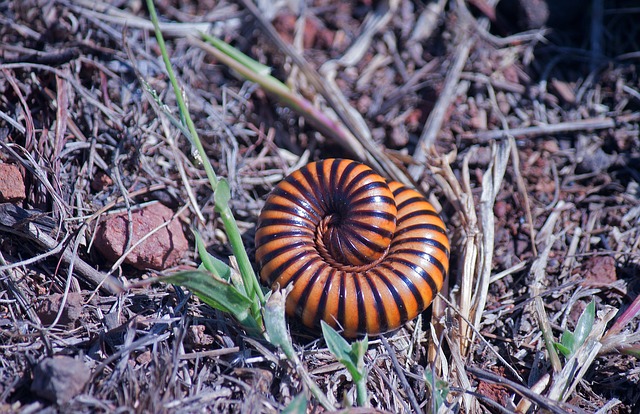Centipedes, invasive insects preferring humid environments, cause problems in homes and businesses. They enter through small openings during warmer months seeking cooler, moist habitats. Effective centipede infestation removal requires species-specific tailored solutions addressing root causes. Eco-friendly pesticides, sealants, traps, baits, and biological controls are used. Preventative measures like moisture control, sealing entry points, and regular inspections significantly reduce reinfestation risk.
Centipedes, though small, can cause big problems in both residential and commercial spaces. These persistent pests often invade homes and businesses, leaving behind not only unsightly evidence but also raising concerns about health and safety. Understanding centipede infestations is the first step towards effective removal. This article guides you through identifying different species, implementing tailored solutions, and preventing future invasions, ensuring a centipede-free environment with lasting success. Learn how to tackle these pesky intruders once and for all with expert advice on centipede infestation removal.
Understanding Centipede Infestations: Causes and Common Areas
Centipedes are invasive insects that can quickly transform from a minor nuisance to a significant problem in both residential and commercial settings. Understanding their behavior and the factors contributing to an infestation is the first step towards effective centipede infestation removal. These creatures thrive in environments with high moisture levels and plenty of hiding spots, making them drawn to areas like basements, crawl spaces, and bathrooms in homes, as well as dark corners, cracks, and crevices in commercial buildings.
Various species of centipedes exist, each with specific preferences, but they all share a common need for humid environments. They often enter structures through small openings, pipes, or doors, especially during the warmer months when they seek cooler, more moist places. Identifying common areas of infestation is crucial for professionals specializing in centipede infestation removal to develop tailored solutions that address the root causes and prevent future invasions.
Identifying Different Centipede Species and Their Behaviors
Centipedes are a diverse group of insects, with numerous species varying in size, color, and behavior. When dealing with a centipede infestation, it’s crucial to identify the specific species present. This is because different centipedes have unique habits and requirements for control. For instance, house centipedes (Nauphoeta cineraria) are common indoor pests known for their speed and preference for damp, dark spaces. In contrast, forest centipedes (Forficula auricularia) thrive outdoors, often seeking out wood piles or compost where they feed on insects and other small creatures.
Understanding their behaviors is essential in implementing effective removal strategies. Some species, like the giant tropical centipede, are more aggressive and may require professional intervention due to their size and potential bite risks. Conversely, others are reclusive and can be managed through environmental modifications. Identifying the centipede species and their habits allows for tailored solutions, ensuring successful centipede infestation removal while minimizing the use of harsh chemicals.
Effective Tailored Solutions for Residential and Commercial Environments
In both residential and commercial settings, centipede infestations can pose significant challenges due to their rapid reproduction rates and ability to thrive in various environments. However, effective tailored solutions exist for successful centipede infestation removal. For homes, a comprehensive approach often involves targeted treatments using eco-friendly pesticides combined with sealants to block entry points. Regular inspections and prompt action are key to preventing recurrences.
In commercial spaces, such as offices or warehouses, the strategies may differ slightly. Professional pest control experts recommend regular monitoring and maintenance programs that include mechanical traps, baits, and biological controls. These methods ensure a proactive approach, especially in high-traffic areas or where centipedes can easily find shelter. Tailored solutions for both settings focus on identifying and addressing the specific needs of each environment to achieve long-lasting centipede control.
Prevention Strategies: Prolonging Success After Centipede Removal
After successfully removing a centipede infestation, preventing future invasions is crucial for homeowners and commercial property managers alike. Centipedes are attracted to moisture and dark spaces, so addressing these environmental factors can significantly reduce the risk of reinfestation. Regularly inspecting and sealing entry points like cracks, gaps around pipes, or windowsills can deter centipedes from returning. Maintaining a dry environment by fixing leaks and ensuring proper drainage is essential.
Additionally, keeping the area around your property clear of debris, organic matter, and dense vegetation creates a less hospitable habitat for centipedes. Regularly trimming grass and shrubs and removing piles of wood or other clutter can go a long way in preventing centipede infestations. Inside, maintaining cleanliness, especially in kitchens, and promptly wiping up spills can reduce attraction. These proactive measures, combined with professional centipede infestation removal services, ensure longer-lasting success and protect against future centipede problems.
Centipede infestations can be effectively managed through tailored solutions that address residential and commercial environments. By understanding the causes, identifying species, and implementing targeted strategies, it’s possible to successfully remove centipedes and prevent future issues. Regular prevention measures, combined with expert knowledge of these insects, ensure prolonged success in keeping spaces centipede-free. For effective centipede infestation removal, consult professionals who can provide customized solutions tailored to your specific needs.
